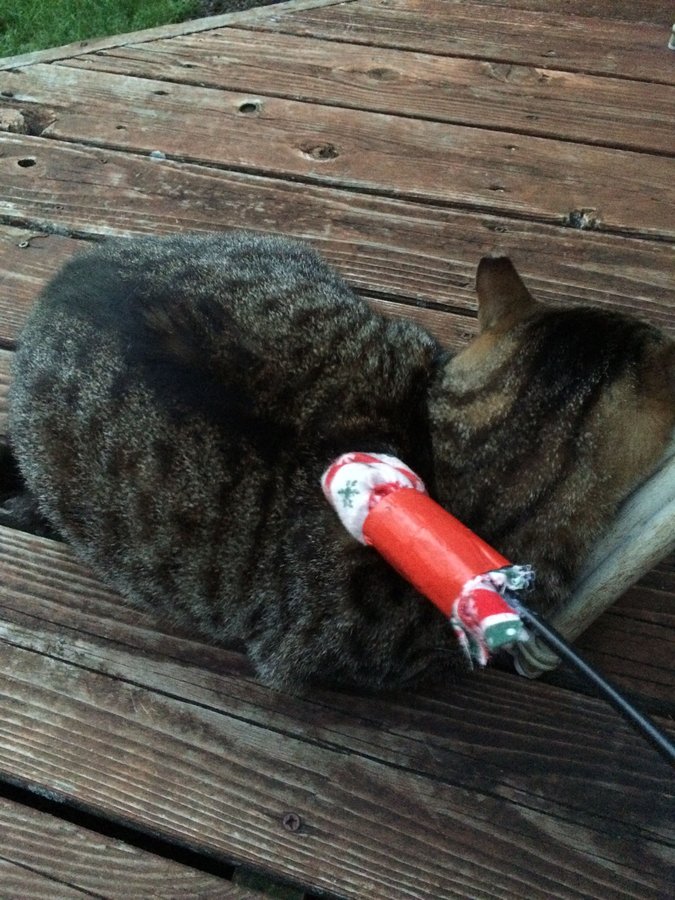- Joined
- Aug 21, 2016
- Messages
- 6
- Purraise
- 1
Hello, I have a feral/stray cat (I'm not sure which category he falls into) living in my spare room. I just got him yesterday.
I have read that it takes a long time for a cat to get comfortable, which is totally understandable. I have the patience for it. I am looking for advice and success stories from people who have had success with a cat like this becoming a house pet.
How did I end up with this cat? I had been thinking about rescuing a cat. I live alone and have no pets (had a cat for 18 years before), so I thought it was a good time. Someone I know had a cat living their parking garage for one month. She said she'd trap the cat and take him to the vet and then if all was well, give him to me. I thought I'd name him Mr. Parker.
Thanks in advance,
Mr. Parker's friend
Here's all of the information I have on him and then some:
The cat's history
Lived in parking garage of condo complex for 1 month.
Was fed by resident every day.
Cat would get close to resident and flop and roll and knead, but no further contact
The vet said he was microchipped and had broken free from a feral colony.
He had already been neutered and ear notched.
How he ended up living in the downtown parking garage is a mystery.
Saturday, 8/20
Resident trapped the cat and took to vet
Vet did exam, shots, flea treatment
I set up a room in my house with litter box, food, water, scratching post, and a couple of toys
I put sheets on the small sofa in the room
The cat had been sedated by vet
I set carrier in room with a blanket on top and opened the door so he could come out when ready
I had to go out at 4:30 pm and when I came back at 8:30, the cat had exited the carrier and was burrowed under the sheets on the small sofa in the room.
A picture frame that was on a hutch was knocked down on the ground, so I assume he ran around scared a bit
I went in and spoke softly a little, sitting in the room for about 30 minutes
I left a night light on in the room
Sunday, 8/21
This morning I went in the room and sat and spoke softly to him
I could see him moving a little under the sheet
He has not used litter box
I lifted the sheet and placed a few treats underneath
I sat some more and talked for a while
I have read that it takes a long time for a cat to get comfortable, which is totally understandable. I have the patience for it. I am looking for advice and success stories from people who have had success with a cat like this becoming a house pet.
How did I end up with this cat? I had been thinking about rescuing a cat. I live alone and have no pets (had a cat for 18 years before), so I thought it was a good time. Someone I know had a cat living their parking garage for one month. She said she'd trap the cat and take him to the vet and then if all was well, give him to me. I thought I'd name him Mr. Parker.
Thanks in advance,
Mr. Parker's friend
Here's all of the information I have on him and then some:
The cat's history
Lived in parking garage of condo complex for 1 month.
Was fed by resident every day.
Cat would get close to resident and flop and roll and knead, but no further contact
The vet said he was microchipped and had broken free from a feral colony.
He had already been neutered and ear notched.
How he ended up living in the downtown parking garage is a mystery.
Saturday, 8/20
Resident trapped the cat and took to vet
Vet did exam, shots, flea treatment
I set up a room in my house with litter box, food, water, scratching post, and a couple of toys
I put sheets on the small sofa in the room
The cat had been sedated by vet
I set carrier in room with a blanket on top and opened the door so he could come out when ready
I had to go out at 4:30 pm and when I came back at 8:30, the cat had exited the carrier and was burrowed under the sheets on the small sofa in the room.
A picture frame that was on a hutch was knocked down on the ground, so I assume he ran around scared a bit
I went in and spoke softly a little, sitting in the room for about 30 minutes
I left a night light on in the room
Sunday, 8/21
This morning I went in the room and sat and spoke softly to him
I could see him moving a little under the sheet
He has not used litter box
I lifted the sheet and placed a few treats underneath
I sat some more and talked for a while




